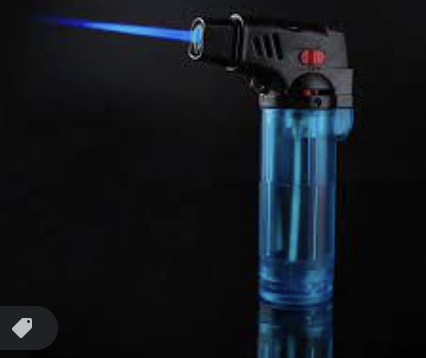 |
| Everyday Astronaut YouTube Video < Hyperlink |
Absolute Zero temperature (-273 C or -459 F) a "Holy Grail" in Physics #physics as achieving this temperature means producing no molecular movement by extracting all the heat from a specific system or mass of substance or material being cooled to absolute zero.
Best FLIR forward looking infrared imaging sensors operate at very low temperatures. When a high- pressure gas released from a compressed gas bottle, the gas expansion produces cooling. The BCU or argon gas bottle coolant used in this way to cool the missile IR target designator command control unit in the $120K FIM-92 Stinger surface to air missile system made. If you use a high BTU propane fueled device with a standard 5 pressurized propane tank, you may notice the tank becomes cold as the device consumes propane rapidly; this is similar to the way the argon produces cooling for the IR sensor, for 45 seconds per Ar-BCU in the FIM-92 imaging system.
 |
| Marine fires FIM-92 Stinger missile |
An even better IR imaging system present on the JWST or James Web Space Telescope so sensitive it can detect 1 nanojansky a non standardized unit of measure of spectra flux density or how many photons per second are striking the imaging sensor in the space telescope. Huge gold plated mirrors on the JWST focus reflected low intensity infrared light so dim that its like a the light emitted by a candle on the moon's surface being looked at from Earth by a human; sadly human eyes are not sensitive enough & lack the kind of optical performance needed for such an activity. An exception cryocooler system on JWST lowers the temperature of the imaging system to improve its spectral performance with imaging low energy infrared photons. Everything emits IR or infrared radiation, except things at absolute zero.
 |
| JWST Model | 2005 Goddard Space Flight Center |
Silicon semiconductor IR imaging sensors used in the SEEK Thermal smartphone charging port dongle system that uses your smartphone screen to display false color or colorized images representing what the IR sensor obtains from infrared light capture through the unusual lens material on the front of the SEEK unit. These IR sensors were actually made for a Pentagon project contract & were obtained by SEEK as "surplus" parts since the defense sector rapidly adopted the use of higher resolution IR sensors. I use one of these SEEK Thermal dongles plugged into the "Lightning" charging port on my iPhone SE & iPhone SE2020 (see images below for example) / this enables imaging of heat in systems like engines, appliances & electronics.
SpaceX cools the oxygen gas to liquify it to improve the amount of LOX oxidizer in the cryogenic storage tank. Cooling the fuel also improves the fuel density so that more fuel can fit in the tank. Most fluids shrink when cooled & expand when heated, which influences the vapor pressure of the fluid. Consider butane in a small plastic pressurized tank in a refillable lighter for example. Here gaseous butane which has a low boiling point, held at high pressure so that its a liquid with higher density than the gas state. Upon activating the lighter, the high vapor pressure of the butane at the average room temperature of the lighter, instantly becomes a gas & combines with oxygen in the air, after the spark from the piezo igniter provides the activation energy to initiate the chemical combustion reaction between butane and air. (see image below as an example)
 |
| Plastic Butane Bottle "Cigar Lighter" |
In CNG or compressed natural gas or propane fueled vehicles, the fuel also stored as a compressed gas liquid that expands & cools the tank as the fuel withdrawn or used up. Many simple hydrocarbon gases become liquids under several hundred PSI of pressure in simple plastic, metal or composite pressure wrapped tanks. In newer Hydrogen Fuel Cell vehicles like the Toyota Mirai, H2 or hydrogen gas stored at 10,000 + PSI, and hydrogen has such a high vapor pressure & such a low boiling point that even at these amazingly high pressures it remains a gas. Cryogenically cooling hydrogen into a liquid was a technological race that took many scientists decades of persistent effort to achieve. Hydrogen is the hardest gas too liquify, hydrogen also the simplest element, a single proton & electron.
 |
| Toyota Mirai "Hydrogen Fuel Cell" HFCEV |
Rocket Fuel Mass Tank Size Paradox


No comments:
Post a Comment